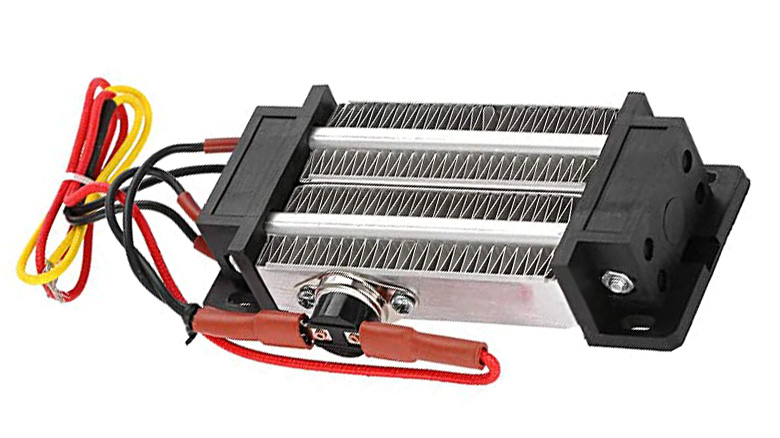Employee ownership in the spotlight: Should companies buy into it?
Editor’s note: Paige Ouimet is Professor of Finance, UNC Kenan-Flagler Business School. This Startup Spotlight is the latest in stories profiling companies or issues and opportunities that focus on North Carolina’s entrepreneurial community.
+++
CHAPEL HILL – Pete Stavros of KKR & Co. founded Ownership Works, a new initiative backed by 19 private equity firms, with the objective of reducing income inequality by increasing employee share ownership. The group has prominent backers and a lofty goal of creating $20 billion in wealth in 10 years. As a researcher who has worked on employee share ownership and the benefits it can create, I was encouraged by the news. But while I broadly support employee ownership, such initiatives also can raise red flags because of the risk they impose on employees. As such, it is worthwhile to think carefully through what we know and don’t know about such programs.
We encourage companies to give compensation to CEOs in the form of stock, so why not do this for all employees?
Giving CEOs stock or stock options aligns the incentives of the CEO with those of shareholders. In other words, it provides the CEO with further incentives to increase the stock price, shareholders’ top priority. Empirical results are consistent with this assertion. For example, Morck, Shleifer, and Vishny (1988) find that equity ownership is positively associated with a firm’s performance, up to a certain threshold.1
But this same intuition does not necessarily apply to nonexecutives. Executives, given their role in setting company policy, can presumably directly affect share values. Any individual rank-and-file worker is unlikely to be able to increase the share price by herself no matter how hard she works. This is often referred to as the “free-rider problem.” So why give workers equity stakes if they can’t individually impact share prices?
Research has identified three justifications. First, employee owners feel more positive about their employer, potentially leading to greater effort, and employee owners also have higher job satisfaction and lower turnover, which can translate into cost savings by the firm.2,3 Second, by providing equity compensation, a firm can recruit workers who are more optimistic about the company’s prospects, which can positively affect culture and lower compensation costs.4 Finally, broad-based employee ownership could impact stock prices through collective collaboration and co-monitoring. If employees can observe one another’s work and influence behavior through peer pressure, employee ownership can create a cultural shift that leads to higher productivity and share values.
How does employee ownership affect firms?
Unfortunately, we don’t have a great answer to this question. We can observe firm performance among companies with employee ownership compared to similar companies without, and, on average, the companies with employee ownership outperform their peers. But is this a comparison between apples and oranges? Firms that provide significant employee ownership are different by definition. Of principle concern is the argument that the firms that can afford to provide their employees with equity stakes are the firms anticipating higher future profit, in which case it is not clear whether the employee equity stake is causing the superior performance or just correlated with superior performance. Economists are creative, and we have tried to establish causality using geographic variation in labor markets or an econometric technique called instrumental variables. The results all suggest a causal relationship, but these results are not as definitive as an experiment with random assignment.5,6
Moreover, the problem gets even trickier because we assume the greatest benefits are in small private firms. One of the mechanisms through which greater employee ownership is likely to translate into greater firm performance is through co-monitoring, and this cooperative outcome is much more likely to occur in small firms where everyone can observe one another’s work. But, we don’t have great data on firm performance among small private firms. What we do know is that small firms with employee ownership are less likely to lay off workers during a recession but they also grow more slowly when there is not a recession.7 The two are likely related. Knowing the firm doesn’t want to lay off workers in bad times, firms with significant employee ownership are thus more reluctant to add workers in good times. Many of us who work in this area, myself included, believe there are positive impacts of employee ownership on productivity and profitability among these small firms given the theory and many positive examples – but we don’t have any systematic data.
Does employee ownership benefit workers?
Firms will state that employee share or stock options are granted to workers in addition to their normal wages and benefits, not in lieu of other compensation. And this is what we observe in the data. Firms that provide employee ownership do not then pay lower wages.8 At some level, however, there must be a trade-off. The equity stake given to employees has a value, and if the firm did not give it to employees, it could have sold it and given the cash to employees. For employees to be better off, it must be that employee ownership leads to greater total firm surplus, as discussed above, and that some of these gains go to workers.
Second, the monetary benefits to workers must exceed the additional risk they take on with employee ownership. The value of a company is inherently volatile. If the field of financial research has given us one lesson, it is the value of diversification. Yet with employee ownership, workers are investing a large fraction of their assets in one firm, a firm that also happens to be their employer. If the firm fails, these workers will lose not just their investments in the firm but also their jobs. There are ways to mitigate this risk, such as providing insurance similar to the quasi-governmental Pension Benefit Guarantee Corp. for pensions. Moreover, to the extent that equity stakes are strictly additive to the compensation package the worker would otherwise have received, then workers will still benefit regardless of the risk they are taking on.
While I would love to dismiss the concerns regarding risk with such a simple argument, I have remaining concerns. Even if employee ownership is purely additive, there will still be spillovers, positive and negative ones. My negative concern is that if workers believe they have significant assets in their name from their employee ownership stake, this is likely to shift their spending and spending behaviors today. To the extent that workers save less if they have more employee ownership, then workers are still exposed to this firm-specific risk even if the equity claims were supplemental. But there is also the possibility of positive spillovers. Historically, equity stakes are a key driver of wealth, and a large segment of Americans have no exposure to the U.S. stock market. Giving workers exposure to equities through their work could encourage more workers to invest broadly in the stock market and allow more Americans to realize the higher gains typically associated with equity investments, compounding any other benefits from employee ownership. Perhaps there is some middle ground such as developing policies that protect workers from significant losses or that encourage diversification as an employee’s stock ownership share grows.
Sources:
1 Morck, R., Shleifer, A., & Vishny, R. W. (1988). Management ownership and market valuation. an empirical analysis. Journal of Financial Economics, 20(C), 293-315. https://doi.org/10.1016/0304-405X(88)90048-7
2 Kruse, D., Freeman, R. B., & Blasi, J. R. (2010). Shared capitalism at work: Employee ownership, profit and gain sharing, and broad-based stock options. University of Chicago Press. https://doi.org/10.7208/chicago/9780226056968.003.0005
3 Blasi, J. R., Freeman, R. B., Kruse, D. L., & Mackin, C. (2010). Creating a bigger pie? The effects of employee ownership, profit sharing, and stock options on workplace performance. Shared capitalism at work. University of Chicago Press. https://doi.org/10.7208/chicago/9780226056968.003.0005
4 Bergman, N. K., & Jenter, D. (2007). Employee sentiment and stock option compensation. Journal of Financial Economics, 84(3), 667-712. https://doi.org/10.1016/j.jfineco.2006.01.008
5 Kim, E. H., & Ouimet, P. (2014). Broad-based employee stock ownership: Motives and outcomes. The Journal of Finance (New York), 69(3), 1273-1319. https://doi.org/10.1111/jofi.12150
6 Hochberg, Y. V., & Lindsey, L. (2010). Incentives, targeting, and firm performance: An analysis of non-executive stock options. The Review of Financial Studies, 23(11), 4148-4186. https://doi.org/10.1093/rfs/hhq093
7 Kurtulus, F. A., & Kruse, D. L. (2017). How did employee ownership firms weather the last two recessions? Employee Ownership, Employment Stability, and Firm Survival in the United States: 1999-2011. W.E. Upjohn Institute for Employment Research. https://research.upjohn.org/up_press/241/
8 Kim, E. H., & Ouimet, P. (2014). Broad-based employee stock ownership: Motives and outcomes. The Journal of Finance (New York), 69(3), 1273-1319. https://doi.org/10.1111/jofi.12150
(C) UNC-CH






